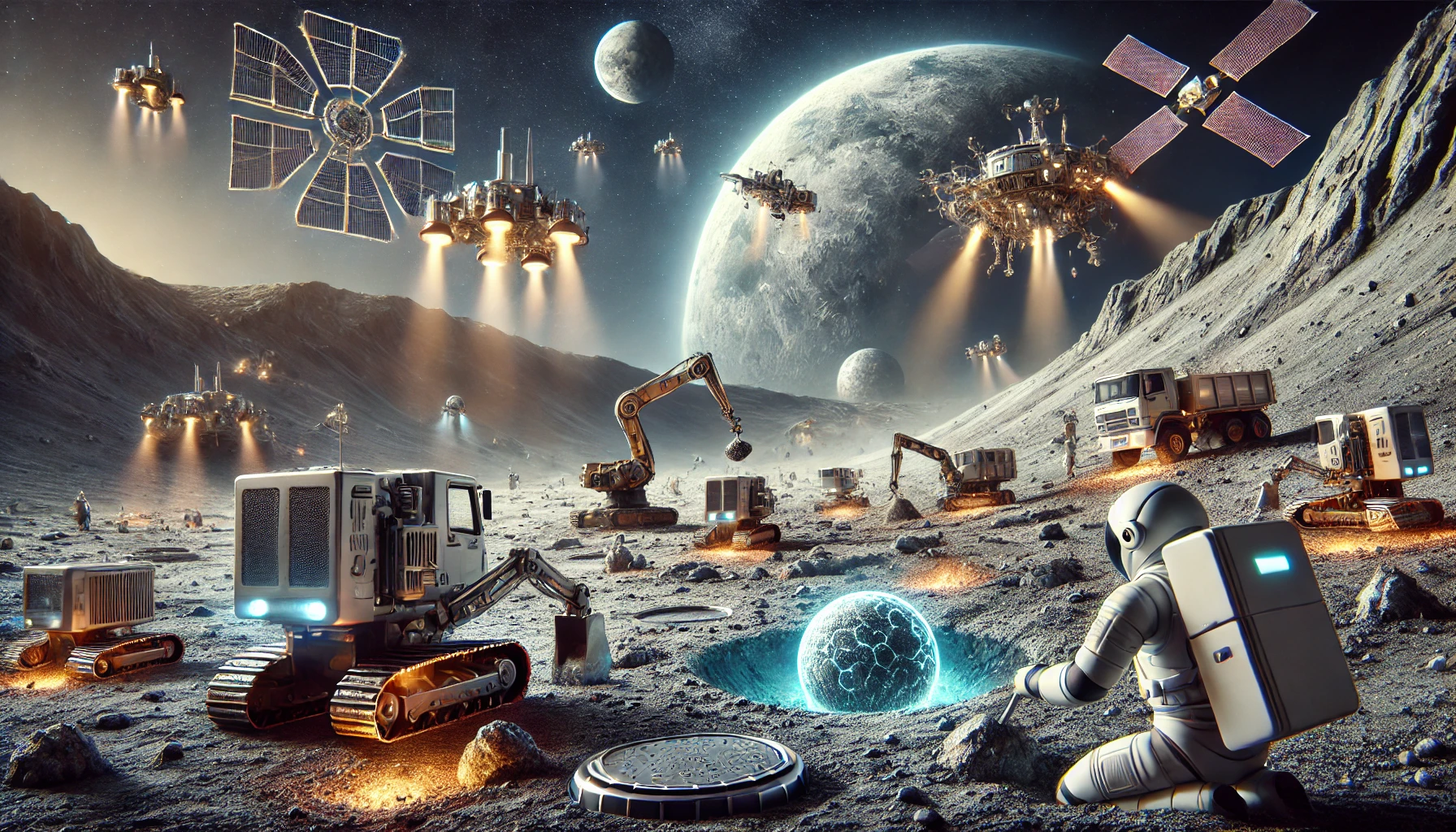Lunar Gold Rush: How Startups Are Turning Moon Mining from Sci-Fi to Reality

Introduction: From Science Fiction to Business Plans
It wasn’t too long ago that mining the Moon was something we only saw in sci-fi movies or heard in conspiracy theories. Fast forward to today, and startups around the world are racing to turn this wild concept into a viable business model. What’s driving this sudden lunar gold rush? The answer lies in the vast wealth of resources buried beneath the Moon’s surface, from precious metals like platinum to helium-3, a potential fuel for nuclear fusion. With the promise of these valuable resources, the Moon is suddenly looking less like a dusty space rock and more like the next economic frontier.
Why the Moon? A Treasure Trove of Resources
So, why are we so fixated on the Moon? The simple answer: resources. The Moon is rich in materials that are either scarce or incredibly expensive to mine on Earth. Helium-3, for example, could revolutionize energy production on our planet, providing a cleaner and potentially limitless fuel source for nuclear fusion. Then there’s platinum, which could make any prospector’s eyes light up, along with other rare earth metals essential for our electronics, batteries, and green technologies. For startups, the lure of these resources is too tempting to ignore. If they can crack the code of lunar mining, they’re looking at a market worth potentially trillions of dollars.
Startups Leading the Charge
Several startups are boldly aiming to mine the Moon, with some making impressive progress. One of the front-runners is Astrobotic Technology, a Pittsburgh-based company specializing in lunar logistics. They’re not just dreaming about mining the Moon—they’re actively building landers designed to deliver payloads to its surface. Then there’s ispace, a Japanese startup that aims to create a lunar economy by developing the technology to extract and transport lunar resources. And we can’t forget Lunar Outpost, a U.S. startup working on autonomous robots capable of traversing and mining the lunar surface. Each of these companies is taking a different approach, but they all share the same goal: to make lunar mining a reality within the next decade.
Technologies Under Development
Lunar mining is no small feat. It requires technology that doesn’t even exist yet—at least not in the form needed to operate in one of the harshest environments in the solar system. Startups are experimenting with everything from robotic excavation systems to spacecraft capable of delivering materials back to Earth. AI is playing a key role too, with algorithms designed to optimize mining efficiency and reduce human intervention. 3D printing is another game-changer, allowing companies to print tools and machinery directly on the Moon, reducing the need for costly transportation. In short, these startups are combining cutting-edge technologies to overcome the significant challenges of operating on the lunar surface.
Challenges: Gravity, Radiation, and Cost
Mining the Moon sounds exciting, but it’s far from easy. First off, there’s the issue of gravity—or lack thereof. The Moon’s gravity is only one-sixth of Earth’s, which makes operating heavy machinery a unique challenge. Then there’s the radiation problem. With no atmosphere to protect against cosmic rays, equipment and workers would face extreme radiation exposure. And let’s not forget the astronomical costs (pun intended). Getting anything to the Moon is incredibly expensive, with the cost of launching payloads measured in the thousands of dollars per kilogram. Startups will need to make lunar mining financially viable to attract the necessary investment.
The Future: Lunar Mining as the Next Gold Rush
Despite these challenges, lunar mining is quickly becoming a space race in its own right. With private companies like SpaceX driving down the cost of space travel, the dream of mining the Moon is getting closer to reality every year. As technology advances, we could see the Moon become a hub for resource extraction, fueling industries not just on Earth but across the solar system. This is more than just a financial opportunity—it’s the next step in human exploration and expansion beyond our home planet.
Conclusion: A New Frontier or Just a Moonshot?
So, is lunar mining the future of resource extraction, or is it just a sci-fi pipe dream? Only time will tell. What’s clear is that startups are taking this idea very seriously, and they’re making strides toward turning it into a reality. With the promise of untapped resources, the Moon might just be the next great economic frontier. But with so many technological, financial, and regulatory hurdles ahead, will these startups succeed in their lunar ambitions? Or will the dream of mining the Moon stay just that—a dream? What do you think? Could lunar mining become the next great gold rush, or is it a moonshot too far?



